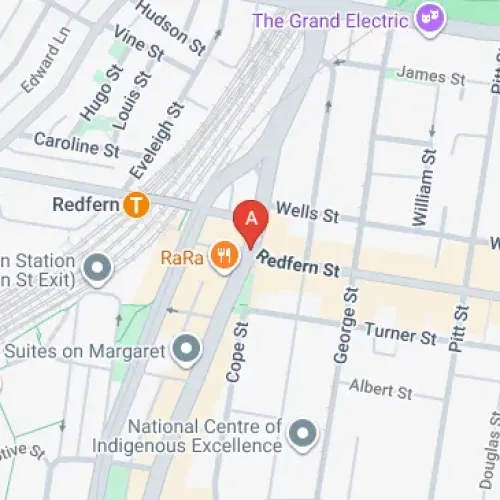Dynamic Parking Allocation for Peak Demand

Finding a parking spot during peak times—whether in Sydney's bustling CBD or Melbourne's shopping precincts—can be frustrating. Dynamic parking allocation and management systems offer a solution, using real-time data and automation to optimise parking space usage, reduce congestion, and enhance the overall parking experience. Here's how this cutting-edge technology is making parking in Australia more efficient and user-friendly.
What is Dynamic Parking Allocation?
Dynamic parking allocation uses advanced technologies like IoT sensors, cameras, and automation to manage parking spaces in real-time. This approach adjusts pricing and space availability based on demand, ensuring parking lots and car park facilities are used efficiently, particularly during peak periods such as holidays, festivals, or rush hours. According to a recent study by the Australian Parking Association, cities implementing dynamic systems have seen up to 30% improvement in parking space utilization and significantly reduced traffic congestion.
In Australia, where approximately 85% of commuters rely on private vehicles in some capacity, the need for smarter parking solutions has never been greater. As Daniel Battaglia, founder of Parking Made Easy, notes in his book "Parking Made Easy: Making Life Easier": "While at times it can seem like a torture device designed to mess with your day, parking has been an issue for civilizations throughout history." Today's technology aims to eliminate that torture through intelligent management of our limited parking resources.

Features of Dynamic Parking Allocation
Modern parking garage and station management systems incorporate several key features that transform the parking experience:
1. Real-Time Data Collection
IoT sensors and cameras monitor parking space occupancy, traffic flow, and user behaviour in real time. This data allows operators to adjust parking availability and pricing dynamically, ensuring smoother operations and better space management. According to Transport for NSW, this technology has reduced parking search times by up to 43% in pilot areas.
- Australian Example: Brisbane's South Bank uses sensors to provide live updates on available parking spots, reducing search times for drivers by an average of 7 minutes per trip.
- Impact: Reduced vehicle emissions from cars circling for parking and decreased traffic congestion in high-demand areas.
2. Dynamic Pricing
Dynamic pricing changes parking rates based on demand, location, and time of day. This system incentivises off-peak parking and ensures prime spots are available during busy times. For instance, higher rates may apply near Sydney's Darling Harbour during major events, while discounted rates may attract drivers to less crowded areas nearby.
The ultimate guide to finding the best parking spots in major Australian cities highlights how understanding these pricing variations can save commuters up to $15 per day in parking costs while ensuring better space availability.
3. Automation in Parking Operations
Automated tools such as smart payment systems, dynamic signage, and mobile apps make parking processes seamless. These technologies notify drivers of available spaces and pricing changes in real time, reducing wait times and simplifying payments. According to Infrastructure Australia, smart parking systems could save Australian urban commuters an average of 20 hours annually in parking-related delays.
- Example: Melbourne Airport's parking system uses license plate recognition for automated entry and exit, improving efficiency and reducing queue times by up to 60%.
- User Experience: Contactless payment options have increased user satisfaction rates by 35% in major Australian parking spaces and facilities.
Advantages of Dynamic Parking Allocation
Dynamic parking systems offer significant benefits for operators, drivers, and urban environments:
1. Increased Revenue for Operators
Dynamic pricing ensures that parking spots and available spaces are always optimally utilised. Higher prices during busy periods increase revenue, while discounts during off-peak times attract more customers. A 2024 report by the Australian Parking Industry Association shows that car parks implementing dynamic pricing have seen revenue increases averaging 15-20% within 12 months of implementation.
2. Enhanced Driver Experience
Drivers benefit from real-time updates on available spaces and pricing, reducing the time spent searching for parking and minimising frustration. Platforms like Parking Made Easy allow users to find and reserve spots with ease, creating a stress-free experience even during peak demand periods.
"On average, Australians spend 3,120 hours of their lifetime searching for a car park with approximately 15 minutes per journey.," according to an UbiPark analysis.
3. Environmental Benefits
Fewer cars circling for parking means lower emissions and less congestion. In cities like Sydney and Melbourne, this contributes to cleaner, greener urban environments. Transport for NSW estimates that up to 30% of inner-city traffic can be caused by drivers searching for parking, making dynamic parking allocation an important tool in urban sustainability efforts.
- Example: Dynamic parking systems in Brisbane have reduced vehicle emissions by 20% through better space utilisation.
- Health Impact: Decreased idling time around parking lots and street parking areas has measurably improved local air quality in high-density areas.

Case Studies in Dynamic Parking Allocation
Success stories from around the world demonstrate the effectiveness of dynamic parking systems:
Australia
Closer to home, dynamic systems in Melbourne's CBD have improved parking efficiency during festivals like the Australian Open, reducing congestion and enhancing the visitor experience. Similarly, Sydney's inner-city suburbs are trialling smart parking solutions to tackle commuter and weekend parking demand peaks.
The integration of EV charging stations with dynamic parking systems in Perth has increased utilization rates of both parking spaces and charging facilities by over 40%, showing how these systems can adapt to changing transportation needs.
Global Examples
San Francisco's SFpark system uses sensors and dynamic pricing to manage parking demand. It has reduced search times by up to 43% and congestion by 10%, showcasing the potential of these technologies. In Seattle, dynamic parking systems have increased parking revenue by 6% and optimised space usage during events and peak periods, benefiting both drivers and businesses.
How Platforms Like Parking Made Easy Help
Platforms such as Parking Made Easy bring the benefits of dynamic parking allocation directly to users. Features include:
- Real-Time Availability: Drivers can find and reserve parking spaces instantly.
- Dynamic Pricing: Competitive rates reflect current demand, offering cost-saving opportunities.
- User-Friendly Tools: Simple navigation and payment processes enhance the overall experience.
By making these tools accessible, Parking Made Easy simplifies parking for drivers while supporting space optimisation for operators. The platform's community-based approach also helps utilize privately owned parking spaces and driveways during peak times, effectively expanding the available parking inventory without requiring new infrastructure.

Future Developments in Dynamic Parking
The evolution of dynamic parking systems continues with several exciting developments on the horizon:
1. Predictive Analytics
Using historical data and AI, predictive analytics can forecast parking demand, allowing operators to adjust space allocation and pricing proactively. Australian researchers at RMIT University are developing algorithms that can predict parking demand with up to 95% accuracy based on event schedules, weather conditions, and historical patterns.
2. EV Charging Integration
Dynamic parking systems are increasingly integrating electric vehicle (EV) charging stations, catering to the growing number of EV users in Australia. With EV sales growing by over 50% annually in Australia, this integration is becoming essential for future-proof parking solutions.
3. Smart City Connectivity
Future systems will link parking management with broader smart city infrastructure, including traffic control and public transport networks, for seamless urban mobility.
- Example: Adelaide is exploring smart city initiatives that integrate parking with real-time traffic updates and public transport schedules, creating a unified urban mobility system.
- Potential Impact: Complete integration could reduce overall urban traffic volume by up to 15% according to Smart Cities Council Australia New Zealand.
Conclusion: Embracing Smarter Parking Solutions
Dynamic parking allocation is revolutionising urban mobility in Australia. By leveraging real-time data, automation, and dynamic pricing, cities can reduce congestion, enhance user satisfaction, and make better use of existing parking garages and facilities. For individuals, businesses, and communities, these systems offer a more efficient, less stressful approach to parking management that saves time, money, and environmental resources.
With advancements like predictive analytics and EV integration on the horizon, dynamic parking systems are set to play a key role in shaping smarter, greener, and more connected cities. Platforms like Parking Made Easy make these benefits accessible to drivers and operators alike, ensuring parking in Australia is efficient, affordable, and environmentally friendly. Ready to experience the difference? Sign up free today to find or list parking spaces and join the parking revolution.
**Written by Daniel Battaglia:** As the author of Parking Made Easy: Making Life Easier is dedicated to making parking easier and more affordable at Parking Made Easy with Generative AI. With a background in business focusing on process improvement and parking solutions, Daniel has dedicated his career to helping drivers find parking. He understands the frustrations of parking and is committed to providing practical solutions. If you have any questions about renting a car parking space, feel free to contact Daniel at daniel@parkingmadeeasy.com.au.


